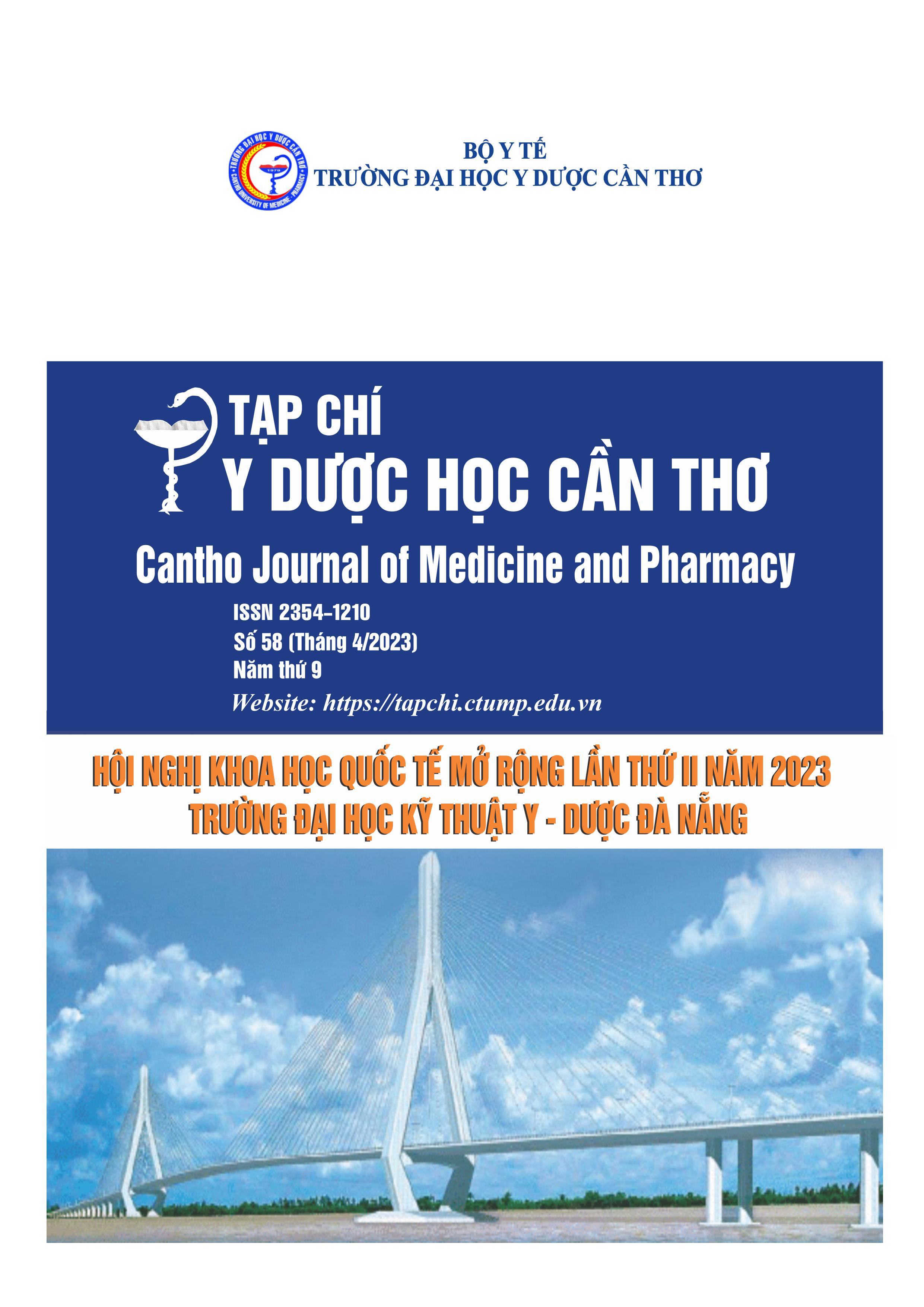ASSESSING ATTITUDE TOWARDS E-LEARNING AND RELATED FACTORS AMONG STUDENTS OF DA NANG UNIVERSITY OF MEDICAL TECHNOLOGY AND PHARMACY
Main Article Content
Abstract
Background: E-learning has gained an importance in the higher education. However, this platform is not always successfully implemented due to the significant impact on the readiness to embrace and students’ attitude towards the new learning model. Objectives: To assess attitude towards e-learning and identify its related factors among students of Da Nang University of Medical Technology and Pharmacy. Materials and method: A cross-sectional study was conducted on 389 students. The study used Scale to Measure Student Attitudes Towards E-learning – SMATE to assess attitude towards e-leaning among students. Results: The mean score of students’ attitudes towards e-leaning accounted at moderate level (127.8±10.2). Students’ school year and internet service quality expressed the correlation with students’ e-leaning attitude (p<0.05), while the study found the weak correlation between students’ attitude with current school year of students participating in the study and internet service quality, at r =-0.126 and r =0.139, respectively. Conclusion: Students had moderate level of attitude towards e-learning. It is essential to have solutions to improve the e-learning system in order to enhance students’ attitude towards e-learning.
Article Details
Keywords
E-learning, students’ attitude towards e-learning, student
References
2. Lương Hải Đình và cộng sự (2020), “Nhận thức và thái độ của sinh viên đối với việc học tập thông qua các công cụ hội nghị trực tuyến trong bối cảnh đại dịch Covid-19”, Tạp chí Giáo dục, 480, tr. 60-64.
3. Adewole-Odeshi, Egbe (2014), “Attitude of students towards E-learning in South-West Nigerian universities: an application of technology acceptance model”, Library Philosophy and Practice (e-journal), 1035.
4. Al-Musaw, Nu'man M. (2014), “Development and validation of a scale to measure student attitudes towards e-learning”, Journal of Teaching and Teacher Education, 2(1), pp. 1-12.
5. Huynh, Roy (2017), “The role of E-learning in medical education”, Academic Medicine, 92(4), pp. 430.
6. Hvalič-Touzery, S., and B. Lobe. (2015), “Attitudes towards e‐learning among Slovenian nursing students: the case of the Faculty of Health Care Jesenice”, Impact Journal, pp. 1-14.
7. Kumari, Warrior, and Kaur. (2022), “Attitude towards E-Learning among College Students”, International Journal of Research in Engineering and Science, 10(6), pp.541-544.
8. Sezer, Baris. (2016), “Faculty of medicine students' attitudes towards electronic learning and their opinion for an example of distance learning application”, Computers in Human Behavior, 55, pp. 932-939.
9. Thapa, Pratima, Suman Lata Bhandari, and Sharada Pathak. (2021), “Nursing students’ attitude on the practice of e-learning: A cross-sectional survey amid COVID-19 in Nepal”, PloS One, 16(6), e0253651.
10. Warnecke, Emma, and Skyler Pearson. (2011), “Medical students' perceptions of using elearning to enhance the acquisition of consulting skills”, The Australasian Medical Journal, 4(6), pp. 300-307.


